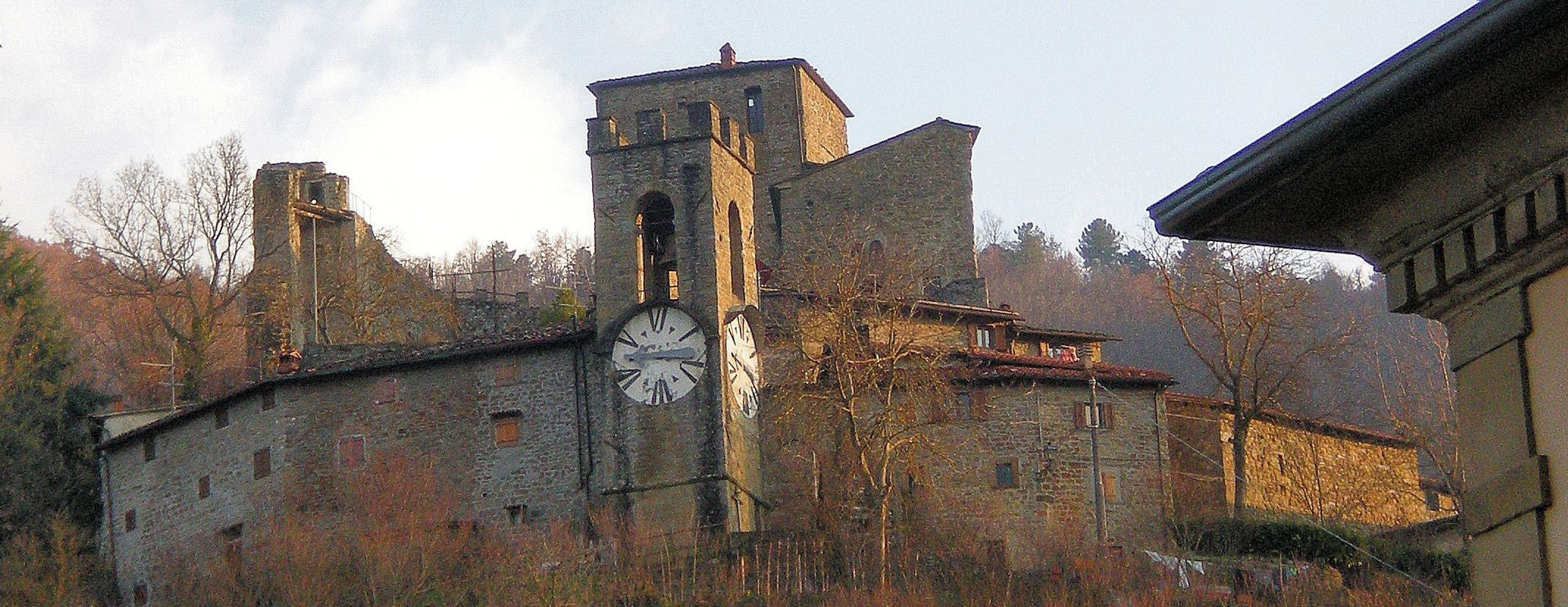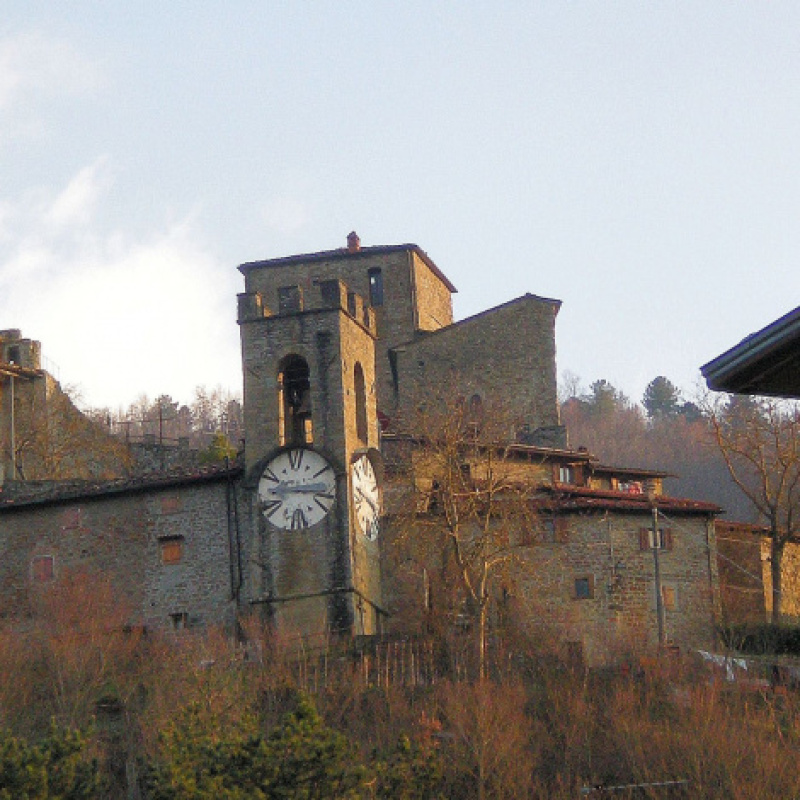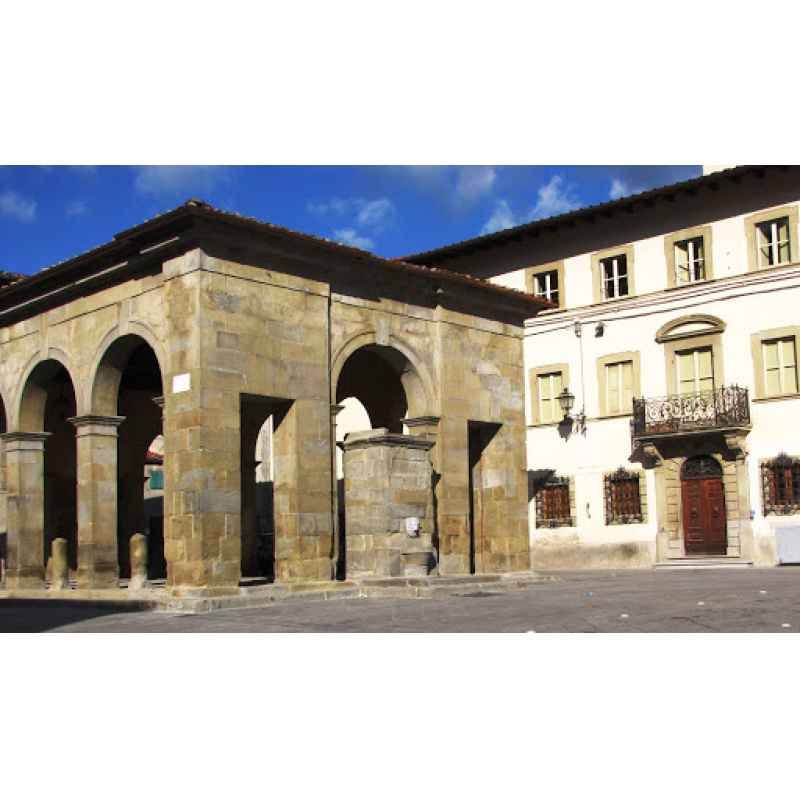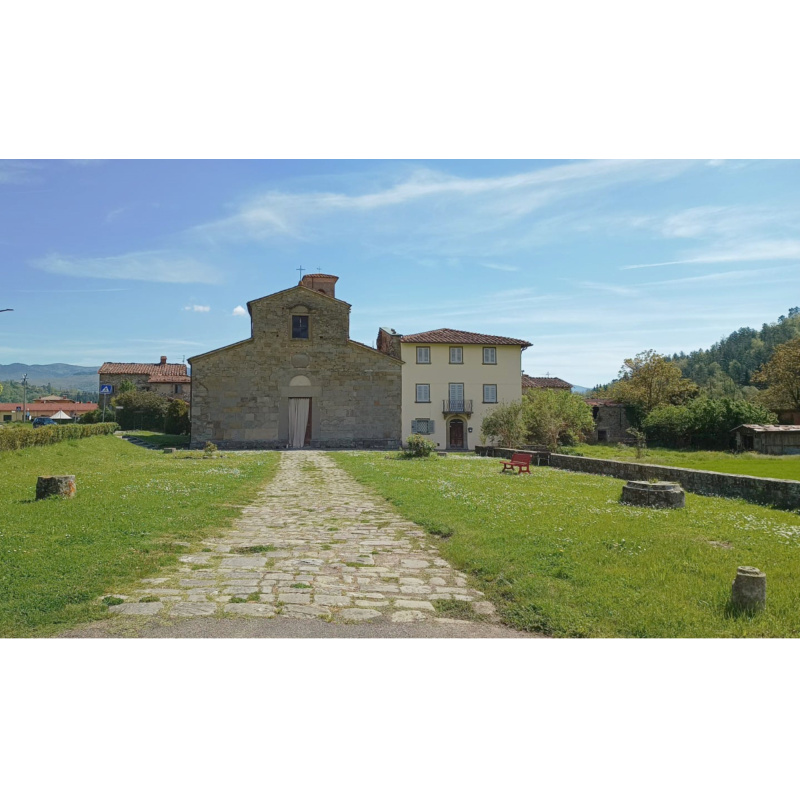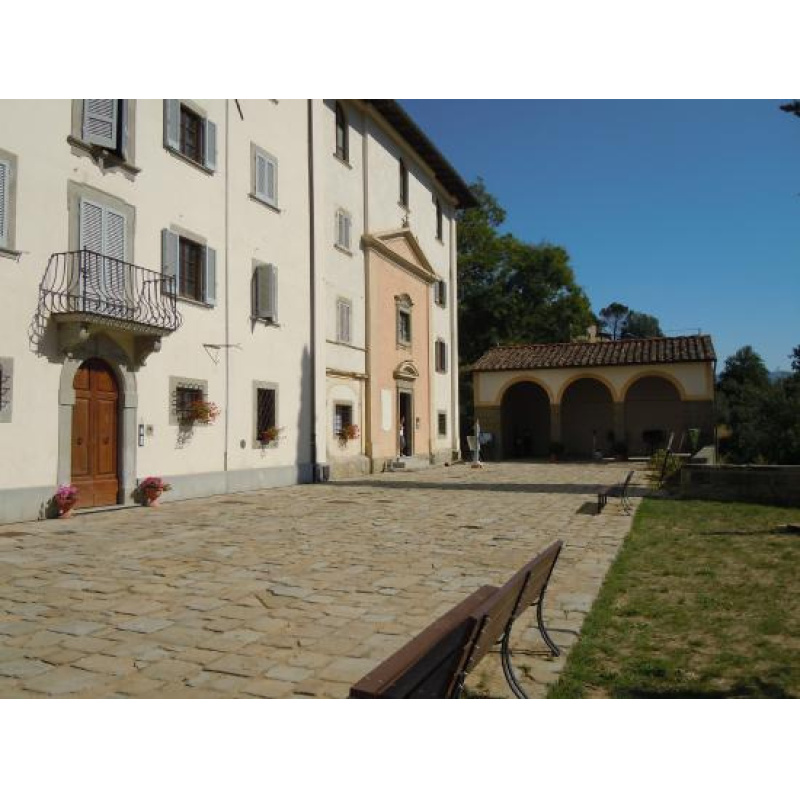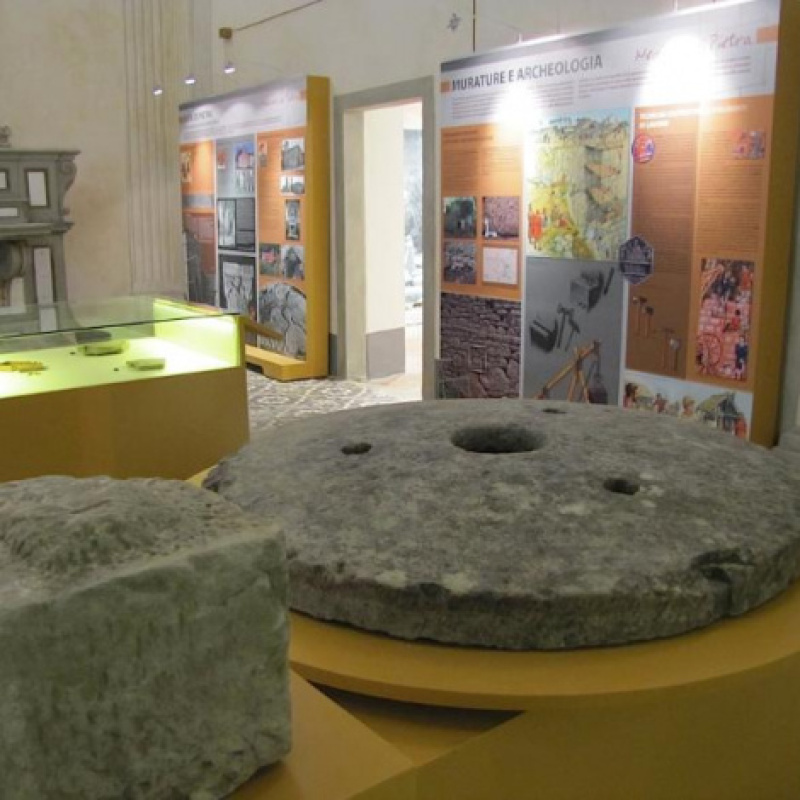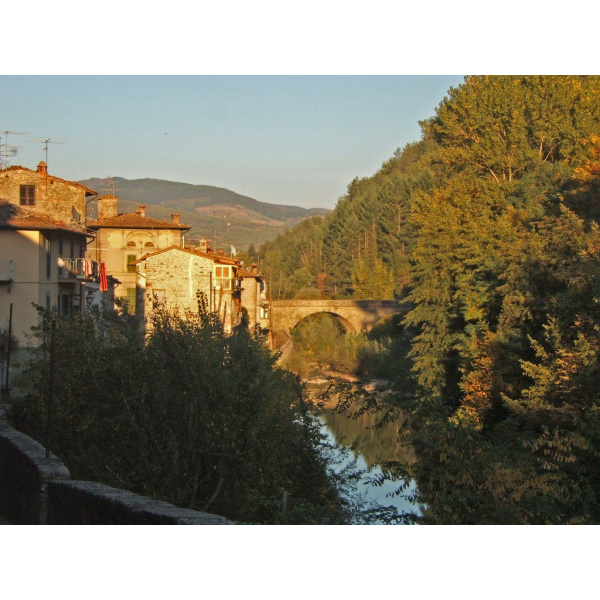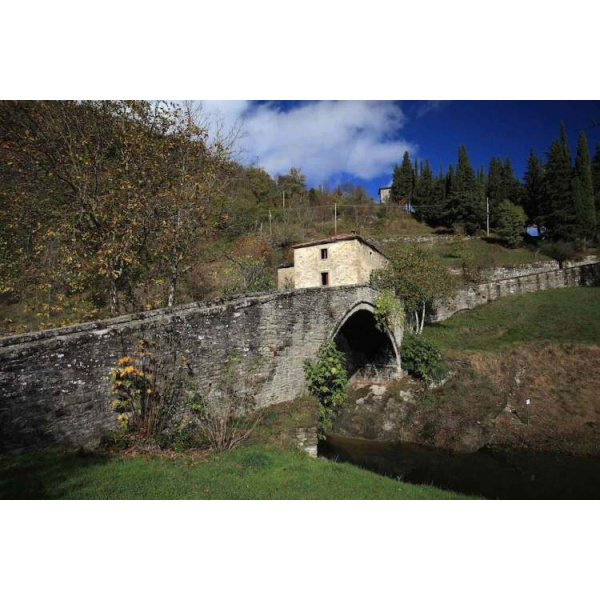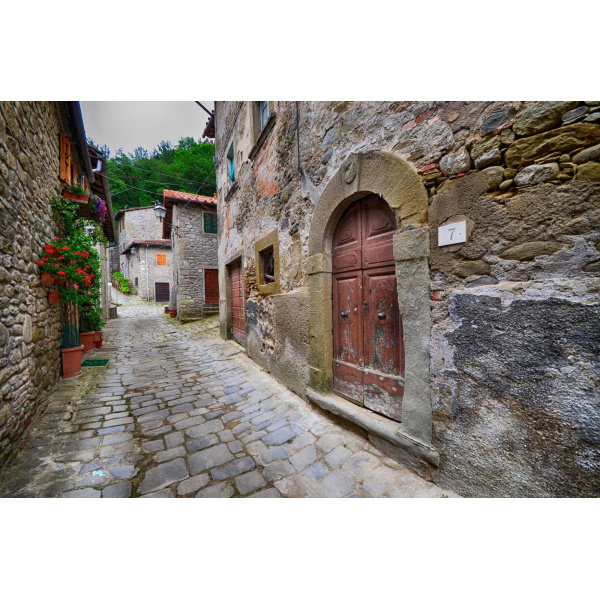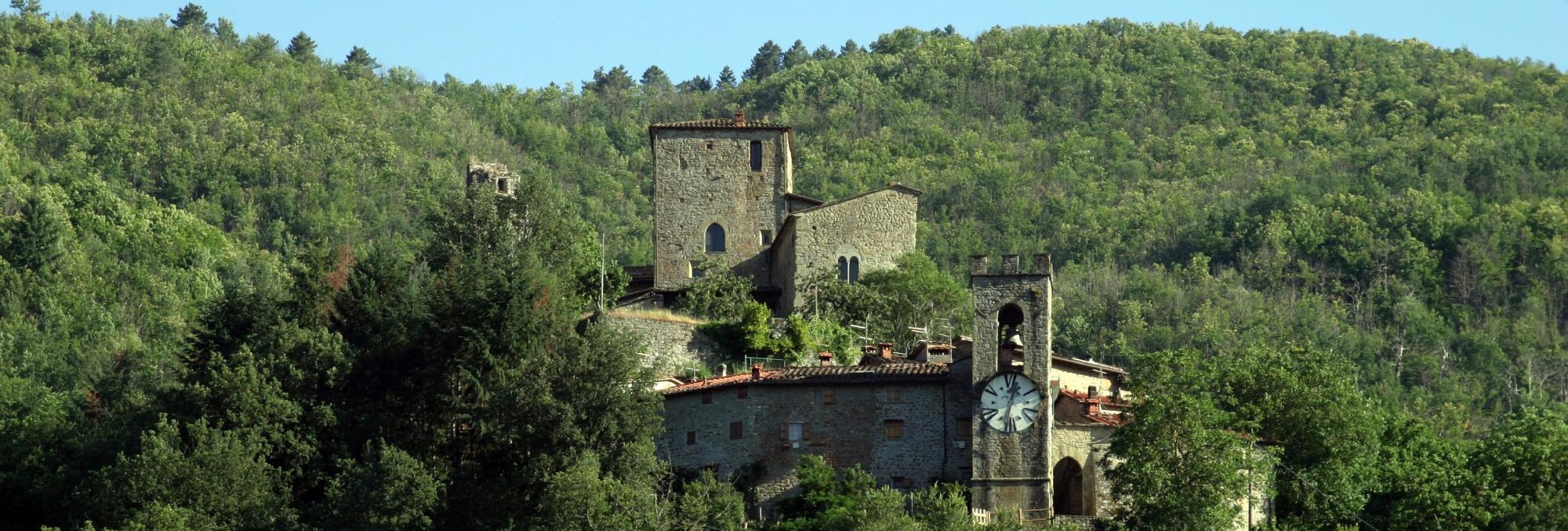CASTEL SAN NICCOLO'
Un paese di antichi borghi di pietra alle pendici del Pratomagno, immerso nel verde delle foreste del Casentino Castel San Niccolò trae nome e origini dall'omonimo Castello dei Conti Guidi (sec. XIII) che sovrasta il borgo di Strada in Casentino, capoluogo del Comune. Il Castello, uno dei più suggestivi del Casentino, fu dimora dei Conti Guidi sino al 1349, quando gli abitanti insorsero contro il potere del Conte Galeotto, figlio del conte Guglielmo Novello, sottomettendosi alla Repubblica Fiorentina.I popoli di Vado (comprendente gli attuali Borghi di Strada, Terzelli, Prato, Rifiglio, Spalanni, La Torre, La Selva), di Garliano, di S.Pancrazio (comprendente gli attuali Borghi di Cetica S.Maria, S. Pancrazio, Pagliericcio, Pratarutoli, Trebbio, Le Lastre, Valgianni, Barbiano)e di Cetica S. Angelo formarono il Comune di Castel San Niccolò, nucleo centrale della Montagna Fiorentina in Casentino, mantenendo ognuno una propria autonomia. Nel 1776, a seguito del Regolamento Speciale del Granduca Leopoldo le quattro comunità vennero a costituire un Comune unico con l'aggiunta di Borgo alla Collina e Montemignaio (quest'ultimo costituito come Comune autonomo con legge napoleonica del 1808). Legato da sempre a Firenze e a Fiesole (alla cui Diocesi tuttora appartiene), venne amministrativamente unito alla Provincia di Arezzo nel 1859. Castel San Niccolò ha assunto l'attuale configurazione territoriale nel 1868, quando agli antichi Borghi, si aggiunsero anche quelli di Caiano, Ristonchi, Battifolle e Vertelli.
Categoria: Luoghi / Place To Visit
Castel San Niccolò English version
This quaint old town is made up of a collection of ancient villages At an altitude of 380 m above sea level, Castel San Niccolò has a population of approximately 2,000 inhabitants and is spread out in numerous medieval villages. HISTORY: This castle is one of the most evocative in the Casentino region. It was home to the Counts Guidi until 1349 when the local inhabitants rebelled against the power of the Count Galeotto, son of Count Guglielmo Novello. The inhabitants of Vado, Garliano, S.Pancrazio and Cetica S.Angelo (which include the modern day towns of Borghi di Strada, Terzelli, Prato, Rifiglio, Spalanni, La Torre, La Selva, Borghi di Cetica S.Maria, S. Pancrazio, Pagliericcio, Pratarutoli, Trebbio, Le Lastre, Valgianni and Barbiano) got together to form the municipality of Castel San Niccolò. In 1776, after a special regulation passed by Grand Duke Leopoldo, the towns of Borgo alla Collina and Montemignaio were added to the municipality. The area has always had close ties with Florence and Fiesole. The last small villages to be added to the town were Caiano, Ristonchi, Battifolle and Vertelli. They became part of the municipality of Castel San Niccolò in 1868. SAN MARTINO IN VADO Such a variety of hamlets has delivered a rich artistic and cultural heritage to the council. Of particular interest is the parish of San Martino in Vado, an 11th century Romanesque church that is perfectly preserved and whose creation is owed to the famous Countess Matilde di Canossa. In the capital town, you can admire the Chapel of the Crucifix that takes its name from a Crucifix with the Madonna and St. John either side that is kept inside. The work, dating back to 1439, is a fresco that, as legend would have it, was created by a prisoner using soft pieces of bread.
